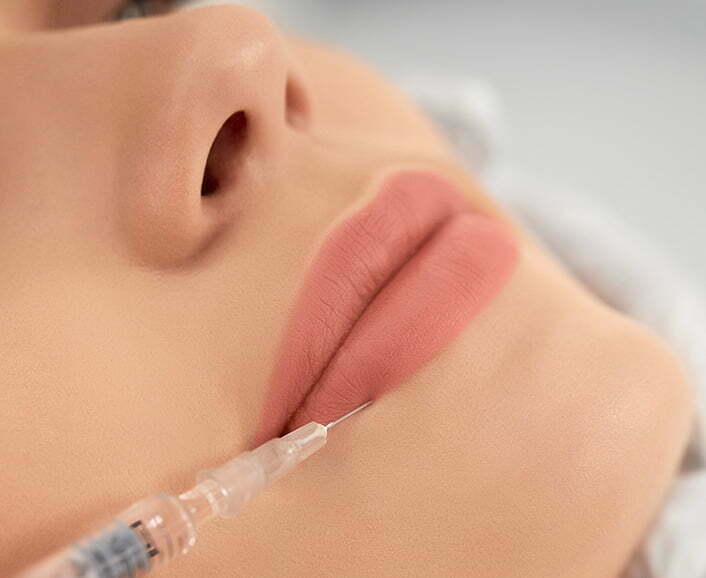Most lip augmentation procedures now use injectable dermal fillers, or solutions that are injected underneath the skin. There are several major types of fillers that doctors use, including hyaluronic acid and collagen. While collagen fillers used to be the most popular option, hyaluronic acid is now the most commonly used dermal filler for lips.
Patients pursue this procedure for a wide variety of personal reasons. Lip fillers can significantly improve the appearance of your lips and provide several corrective advantages. For example, lip fillers can give lips a fuller shape or younger appearance, remove some wrinkles, restore previous lip shape, or make your lips more symmetrical.
Before you go in for the procedure, you’ll have to schedule a consultation with a qualified Northeastern Eye Institute professional. We will review your goals and expectations, answer any questions you have about the process and make sure that you don’t have any health conditions that could make the procedure risky. During this consultation, the doctor will also take facial measurements and photos. This helps us tailor your injections to your unique features and facial shape. During this process, it’s important to describe exactly what you’re hoping to gain from the procedure and how you want your lips to look.
When you arrive on the day of the procedure, your doctor will start by numbing your lips. In most cases, they’ll use a cream that consists of benzocaine, lidocaine, and tetracaine (BLT). In some cases, patients may have an allergy to these medications and the doctor might use a nerve block injection instead. Once you receive the topical anesthetic or injection, it should take about 15 to 30 minutes for your lips to become numb.
Once the anesthetic takes effect, your doctor will begin to inject the solution using a very thin needle. In most cases, the doctor will inject about a milliliter of solution into your lips. The procedure doesn’t hurt, although there may be a slight pinching sensation. During and after the procedure, the doctor will provide ice packs to prevent swelling and bruising.
Once the procedure is complete, the doctor may massage the lips to distribute the solution. They may also monitor you for a short period to see if you display dizziness or any other side effects. In the days after the procedure, your lips may appear swollen and bruised, although this usually disappears within 48 hours to a week. Applying ice packs can help reduce the swelling, and it’s important to avoid puckering your lips, exercising, and applying lipstick or lip balms.
